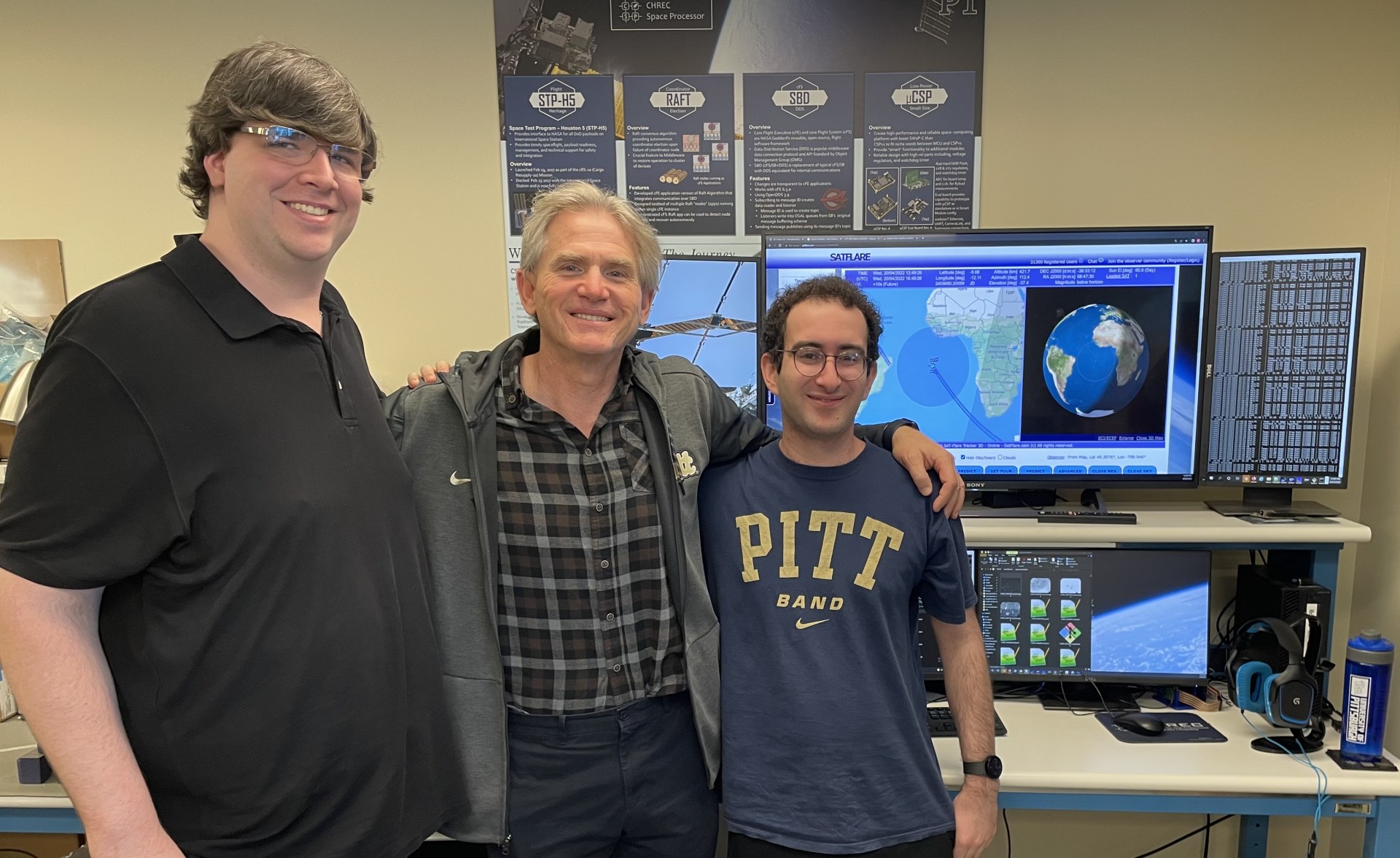Space Center Pittsburgh
How the NSF SHREC Center further extended its orbit in 2023
Since establishing its “alpha base” at the University of Pittsburgh in 2017, the NSF Center for Space, High-performance, and Resilient Computing – colloquially known as “SHREC” – continues to expand its research in mission-critical computing. And 2023 has been another landmark year.
Created through the National Science Foundation’s Industry-University Cooperative Research Centers (IUCRC) program, SHREC is both a national research center and consortium dedicated to fostering university, agency, and industry R&D collaborations and workforce development. Pitt’s partner institutions include Brigham Young University, University of Florida, and Virginia Tech, under the leadership of Alan George, R&H Mickle Endowed Chair and Professor and Department Chair of Electrical and Computer Engineering at Pitt’s Swanson School of Engineering.
“Pittsburgh is gaining notice nationally for its expertise in space research, technology, and education, from Astrobotic and Carnegie Mellon University to the Keystone Space Collaborative among others, and SHREC is proud to be a part of that ecosystem,” George explained. “Pittsburgh has a long history of public-private partnerships creating transformation, and SHREC and its members continue to benefit from that ethos.”

Above from left: Evan Gretok, Alan George, and Seth Roffe in front of the CASPR ground station at Schenley Place on Pitt's Oakland campus.
George said that this past year established a stronger foundation for an even more successful 2024. Some of these initiatives include:
- The Configurable and Autonomous Sensor Processing Research (CASPR) system, which was installed on the International Space Station (ISS) in January 2022, is designed to enable effective onboard processing for next-generation sensors and applications. A Department of Defense payload on the Space Test Program - Houston 7 (STP-H7) pallet, CASPR was developed, designed, and built by the students and faculty at SHREC. Its two-year journey on the ISS is coming to a close, and the team is wrapping up final experiments before the expected mission conclusion in early 2024.
- NASA Johnson Space Center in Houston, Texas will host SHREC’s annual workshop on January 17-18, 2024, with attendees expected from all 30+ organizations in SHREC.
With the focus of the January workshop in part to select the Center’s new projects for 2024, George says that SHREC is in a strong position entering its sixth year in Pittsburgh.
“Today we are leveraging $2-3 million per year in research between our four universities, with major R&D projects from space and related systems to high-performance computing, AI, and more,” George explained. “Thanks to our SHREC members, we are able to recruit incredible graduate students that learn to design and build these space experiments that have performed so well on the space station. What’s more, we remotely operate research experiments from our ground station on Pitt’s campus, so that really builds pride amongst our students.”
George said that pride extends to the member organizations as well, because of the space research and tech they are advancing, while producing the next generation of space engineers.
“So many children have dreams of being an astronaut – like myself and many of our students – but of course it’s an elite program, and the vast majority of space missions are unmanned. So, we get to do the next best thing – imagine, design, and build systems that operate in space under our control. For us, it’s a tremendous accomplishment that drives our research.”
